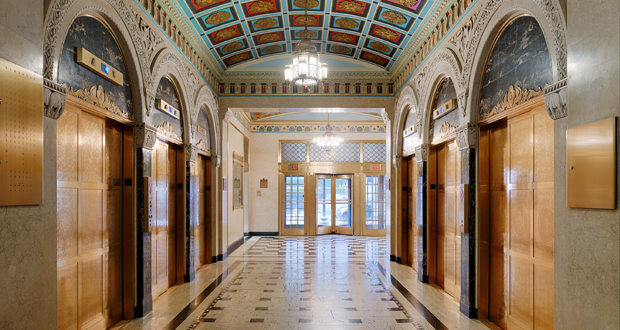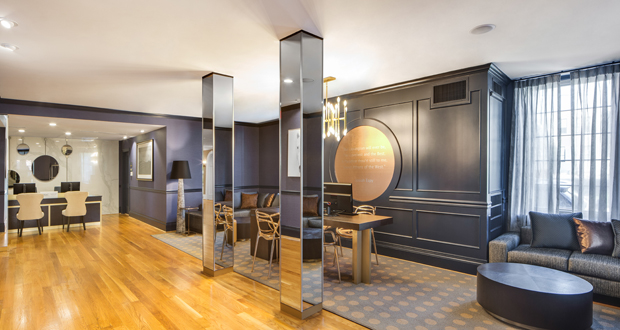
Historic hotel renovation projects are always a balancing act. When done correctly, it’s possible to create a modern lodging experience that upholds brand standards while staying true to the authenticity of the original space. However, poor planning, scheduling issues, unrealistic fees, and delayed brand approvals can quickly derail the process.
To get off on the right foot, rely on past projects to set realistic fees and scheduling when proposing for historic renovation or adaptive reuse projects. Also, be aware of special consideration, such as securing the tax credits and approvals that can be critical to a historic hotel renovation.
CR architecture + design (CR) handled two such historic renovations. The firm was the architect of record for The Sire Hotel in Lexington, Ky., part of the Tapestry Collection by Hilton. The firm handled the architecture, interior design, and MEP engineering of that $2 million project, including full guestroom, corridor, and lobby renovations of the 43-key property. The other historic hotel renovation involved converting the former headquarters of the Cincinnati Enquirer newspaper into a dual-flag hotel, housing a 105-key Homewood Suites and a 144-key Hampton Inn & Suites. This $18-million project also included the design of a shared bar, meeting space, and commercial/retail space at street level.

The challenges faced with The Sire project are common to any historic hotel renovation—designing with unique brand standards and modern guest expectations in mind while maintaining the character of an old building that was not constructed for modern lodging layout and operations. Limited space and unexpected MEP infrastructure modifications were the primary obstacles encountered while renovating this 100-year-old building. One solution for the small-scale lobby was using a sit-down reception desk instead of the standard standing reception area, and finding ways to accommodate the shift in user demographics—from boomers exiting the business travel space to millennials entering it—in smaller spaces; this was the concept behind the design of the rooms, showers, closets, and tech amenities.
Overall, for the Sire, the renovation drew upon Lexington’s history of world-class horse racing, great statesmen, and academic excellence to create a welcoming, intimate lobby reflecting local culture through rich finishes, art work, and refined details.
The Enquirer building is a unique, 90-year-old, 14-story, limestone and brick structure that mixes Art Deco, Gothic, and Pre-Modern architectural styles. It was never intended to house one hotel, much less two. It was, therefore, a daunting undertaking to fit as many rooms as possible on the building’s H-shaped allotted floors while preserving brand qualities. This meant finding creative solutions for the very specific requirements of two separate brands while maintaining the historic appearance and status of the building.
This began with navigating the government processes involved in securing the historic tax credits and complying with requirements imposed by the Ohio Historic Preservation Office and National Park Service on the building’s exterior—including the windows—to preserve the building’s history.
During the restoration—which included the historical first-floor lobby and elevator landings—the original decorative coffered ceiling was discovered, including hand-painted details, marble wainscoting, and intricate bronze finishes. It was fully restored and, ultimately, became a one-of-a-kind feature for the project.
It’s a unique challenge to preserve the history of a building while ensuring a modern and consistent brand experience for guests. Success can be achieved with the right mix of preparation, skill, and creativity.
About the Author
Kelly Gaddes is a director of interior design at CR architecture + design.
Top photo: Dual-brand Homewood Suites and Hampton Inn & Suites in the former headquarters of the Cincinnati Enquirer.











